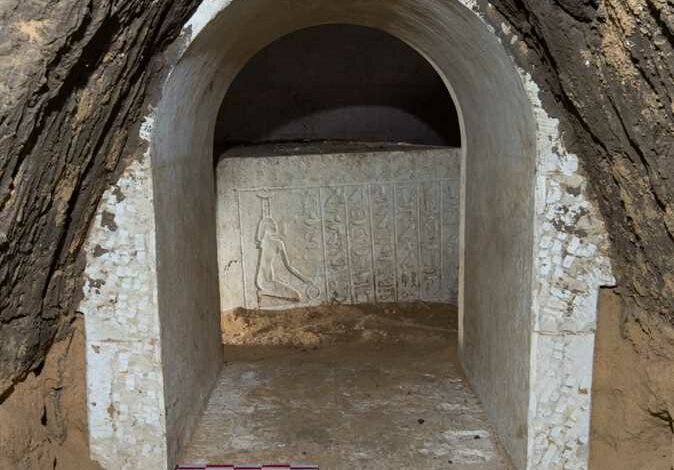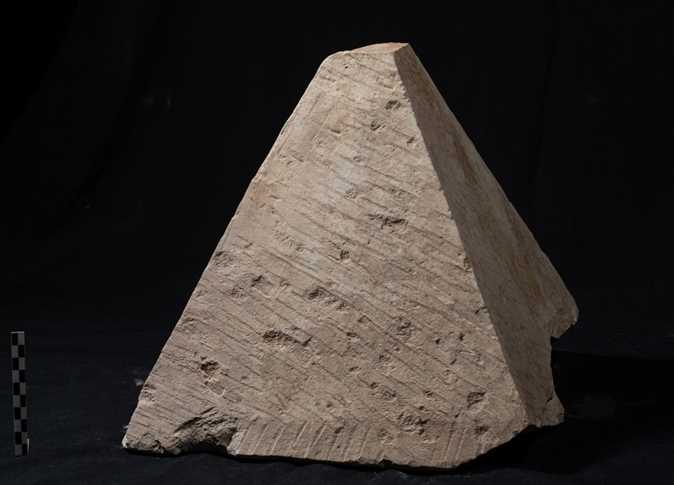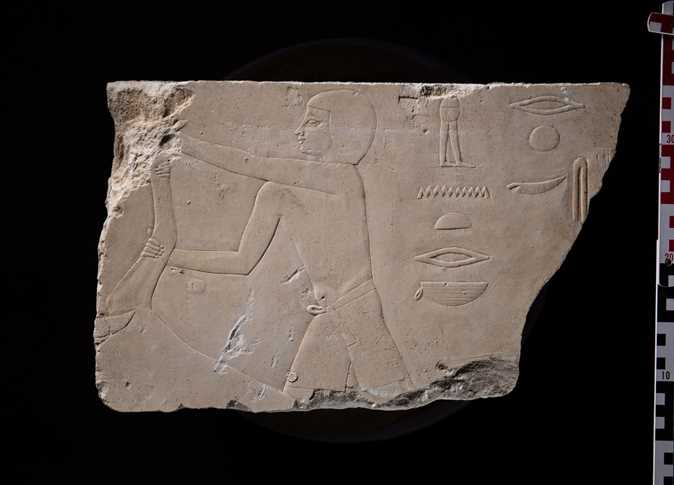
A Czech archaeological mission from the Faculty of Arts of Charles University in Prague has discovered the tomb of a royal scribe named “Jheuti Em Hat”, while excavating at the Abusir necropolis, the Secretary-General of the Supreme Council of Antiquities Mostafa Waziri announced.
The tomb dates back to the middle of the first millennium BC.
Waziri explained that this part of the Abusir necropolis is home to tombs of senior officials and military commanders from the 26th and 27th dynasties.
It is of great importance to scholars of ancient Egyptian society during this period, he noted.

Waziri stated that the importance of this discovery is due to the fact that the life of the royal scribe Jheuti Em Hat, who lived during the 27th dynasty, was previously unknown.
This new discovery, along with previous findings at the Abusir site such as the tomb of military commander “Wah Ib Ra” discovered by the Czech mission a few years ago will shed more light on the historical changes that occurred in Egypt during the turbulent times of the fifth and sixth centuries BC.
The director of the Czech mission, Marcel Barta, explained that the tomb was built in the shape of a well ending in a burial chamber.
He said that although the upper part of the tomb was not found intact, the burial chamber contains many rich hieroglyphic scenes and writings. The burial chamber can be accessed via a small horizontal passage below the well, which is about three meters long, he noted.

He explained that the well leading to the tomb featured scenes inside that were also part of the neighboring tomb, which was built for one of the military commanders during that period called Menkh Ib Nikau, he explained.
The burial chamber of Jheuti Em Hat is rich in inscriptions.
On the northern wall (entrance) there is a long series of religious writings against snake bites, quoted from the Pyramid Texts.
The southern and western walls were carved with ritual offerings, while the ceiling of the burial chamber features a depiction of the journey of the sun across the sky in its morning and evening boats, accompanied by hymns to the sunrise and sunset.

The deputy director of the Czech mission Mohamed Majed, uncovered the sarcophagus of Jheuti Em Hat, adding that its is made of stone and decorated with hieroglyphic texts and depictions of gods from outside and inside.
The upper side of the coffin cover and its longer sides are decorated with different texts from the Book of the Dead, including images of gods that protect the deceased.
The shorter sides of the cover bear images of the goddesses “Isis and Nephthys” accompanied by texts of protection for the deceased.
“As for the external sides of the coffin, they are decorated with excerpts from the coffin and pyramid texts, which are a partial repetition of the spells that already appeared on the walls of the burial chamber,” he said, adding, “At the bottom of the inner wall of the coffin, the goddess “Immutet” is depicted, the goddess of the West, and the inner sides contain what are called the Canopic spells, recited by this goddess and the god of the earth (Geb).”
“All of these religious and magical texts were intended to ensure the smooth entry of the deceased into eternal life.”

Majed noted that no funerary objects were found inside the tomb of Jheuti Em Hat, as the tomb was previously robbed – perhaps as early as the fifth century AD.
Anthropological studies of the remains of the tomb owner showed that Jheuti Em Hat died at a relatively young age, at around 25 years old.
His mummy showed signs that he was suffering from some diseases due to his job, including wear and tear on the spine due to sitting for long periods, and he also suffered from severe bone fragility.
This injury may confirm that Jheuti Em Hat was related to the owners of the neighboring tombs, who were also confirmed to have the same disease, including the famous priest “Iouef Aa”.




